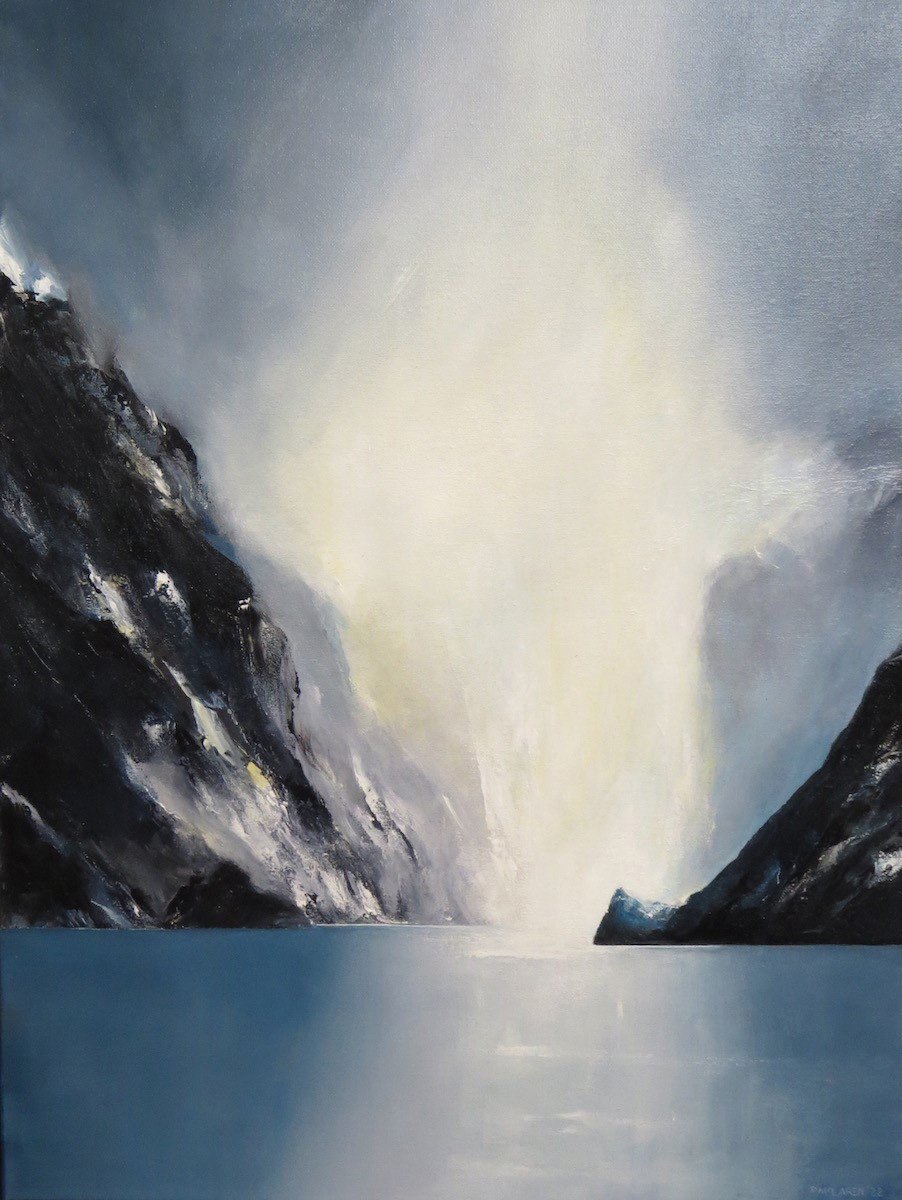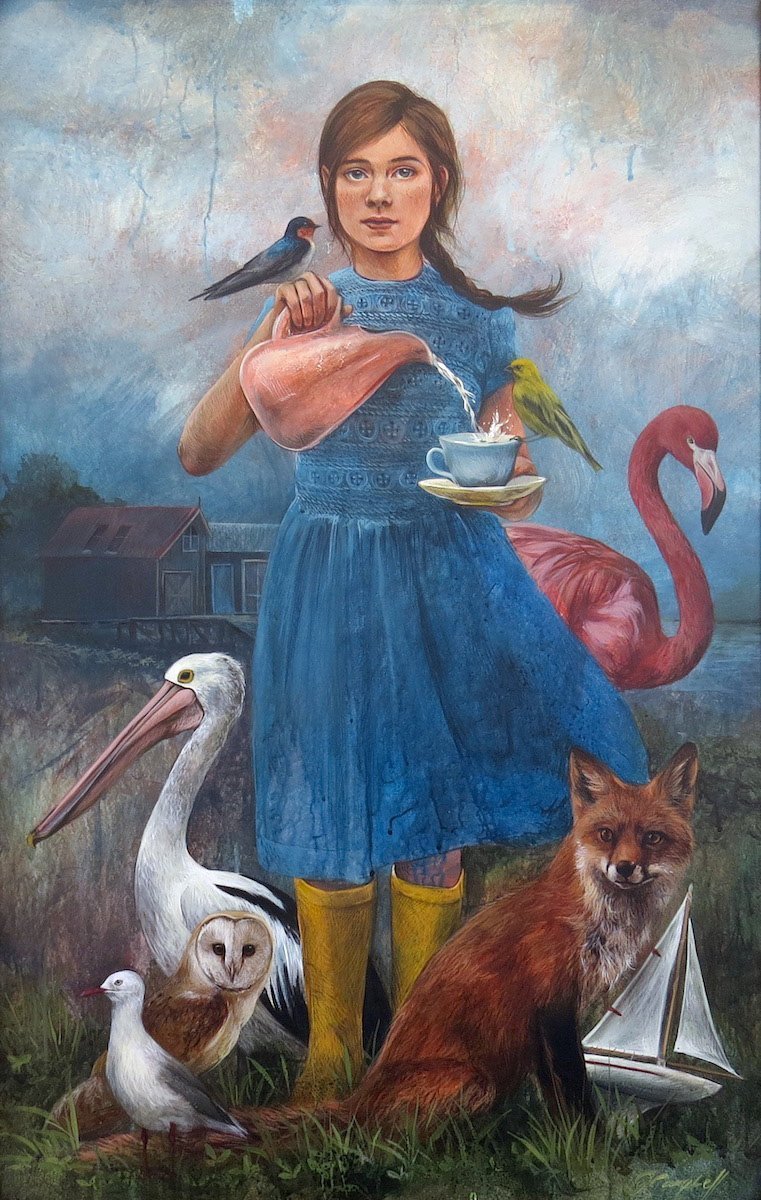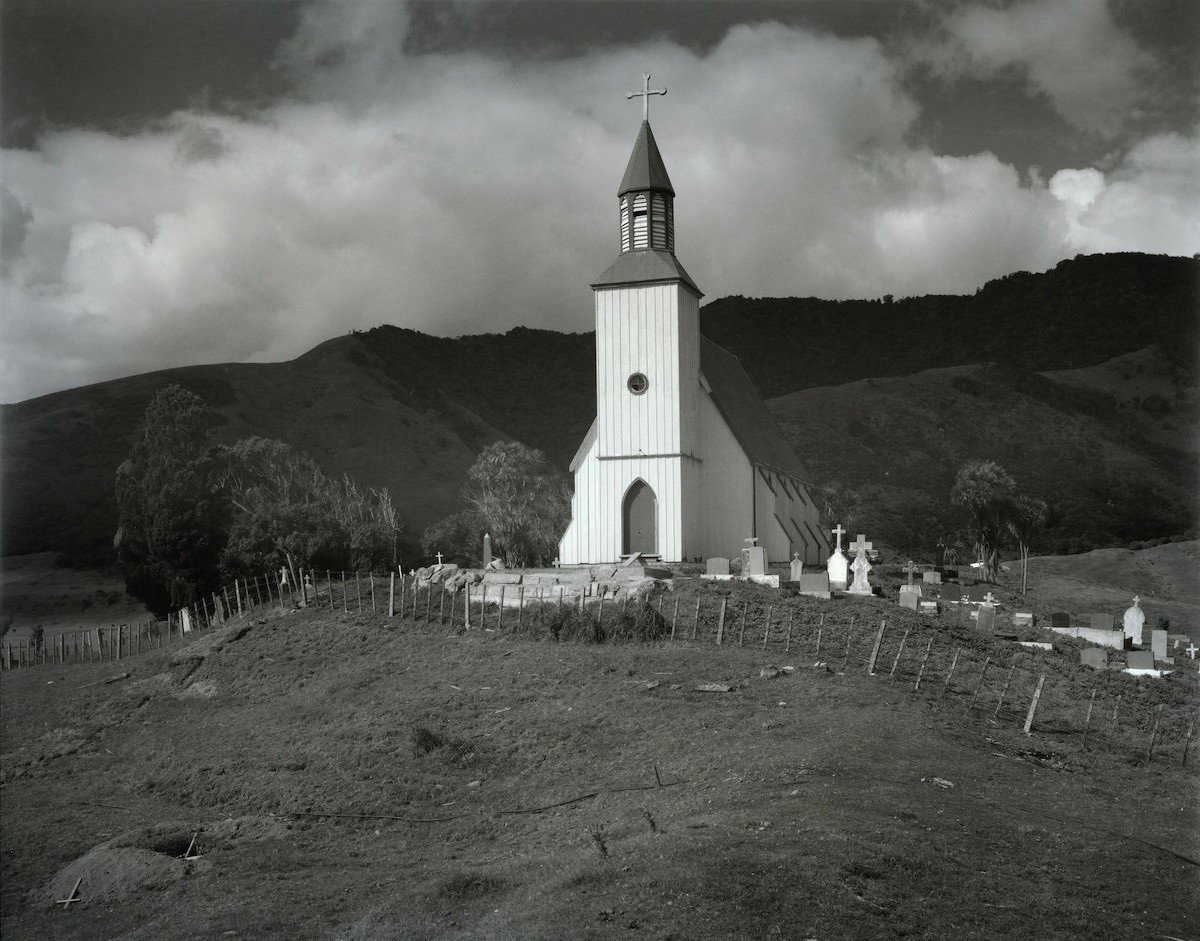
(Moray Gallery)
There are many different words for the feeling of melancholy through separation: nostalgia (literally "ache for home"), saudade, homesickness, hiraeth. For those of us who have relocated across the world permanently, it is often accompanied by a sense of straddling two lands, never able to completely regard either as home.
Peter McLaren’s meditation on this bipolarity is reflected in his deep, luminous landscapes, works which are clearly of the southern South Island but which also reflect the light and atmosphere of his native Scotland. The towering forms of Fiordland are bathed in Scottish mist, the sheer mountainsides are as much Skye as they are Monowai. In this amalgamation, a new, imagined home appears, neither Scottish nor antipodean. The works are, perhaps tellingly, strongly reminiscent of early New Zealand painter and botanist John Buchanan, another Scottish native who saw a reflection of his homeland in the peaks surrounding Milford Sound.
Two works separate themselves from the rest in this exhibition: a lone wind-bent macrocarpa on an empty hillside has a less realistic feel but a strong emotional pull, and a more abstract light-box work, Leaving St. Kilda. The latter piece’s title resonates on several levels, with our local St Kilda and the lonely Scottish island permanently evacuated by its residents last century.

(The Artist’s Room)
Gemma Campbell returns to The Artist’s Room with a further series of her whimsical yet striking portraits of children and animals.
There is an air of surrealistic near-natural history to the artist’s groups, in which individual children and groups of wild animals interact in scenes of harmony. The images are deftly created, with the animals in particular painted in precise detail. It is the children in these works that often seem the most compelling, however, their expressions wise beyond their years, and looking as if they have a message to impart that we could not understand. It is this cryptic narrative content which makes works such as Let the Words Pour Out so attractive.
The artist has often cleverly used ornate found frames as both a restriction and a guide to her works. This is especially effective in the magical oval piece Bounty, with its Alice-in-Wonderland child and basket of wild animals.
Alongside these gentle yet haunting acrylic works, the artist has presented several prints: five drypoint etchings and two lino cuts.
These works reinforce our impressions of the artist’s skill. The etchings are beautiful and realistic animal character studies, and the lino cuts (Tom Kitten and The Fox and the Bee) are both strong attractive works.

(Brett McDowell Gallery)
The latest exhibition of Laurence Aberhart’s work at Brett McDowell Gallery is a series of gentle studies of rural Northland, photographed in the 1980s but mostly never previously shown.
After having spent his formative years in the south, Aberhart first travelled to Northland — where he would make his permanent home — in 1982. As with many southerners travelling to the far north, the difference in the atmosphere of the region came as a shock, one reflected in many of Aberhart’s first photographs of the region.
In this series of works, all from the photographer’s first two years in the north, Aberhart concentrates on some of the rustic churches and unusual gravestones which he found in the region. The sense of otherness is exacerbated by his deliberate concentration on ornate wooden grave markers, several of which are from the Rātana faith.
The wooden — and sometimes dilapidated — nature of these edifices makes viewers feel as if they are viewing history. These photographs, taken 40 years ago, may well reflect structures that have since crumbled, leaving these images as their only memory. The feeling of the loneliness of these boards under the wide northern sky is a focus of the works, which as always are presented with the meticulous precision afforded by the artist’s skilful plate negative and contact print process.
By James Dignan












